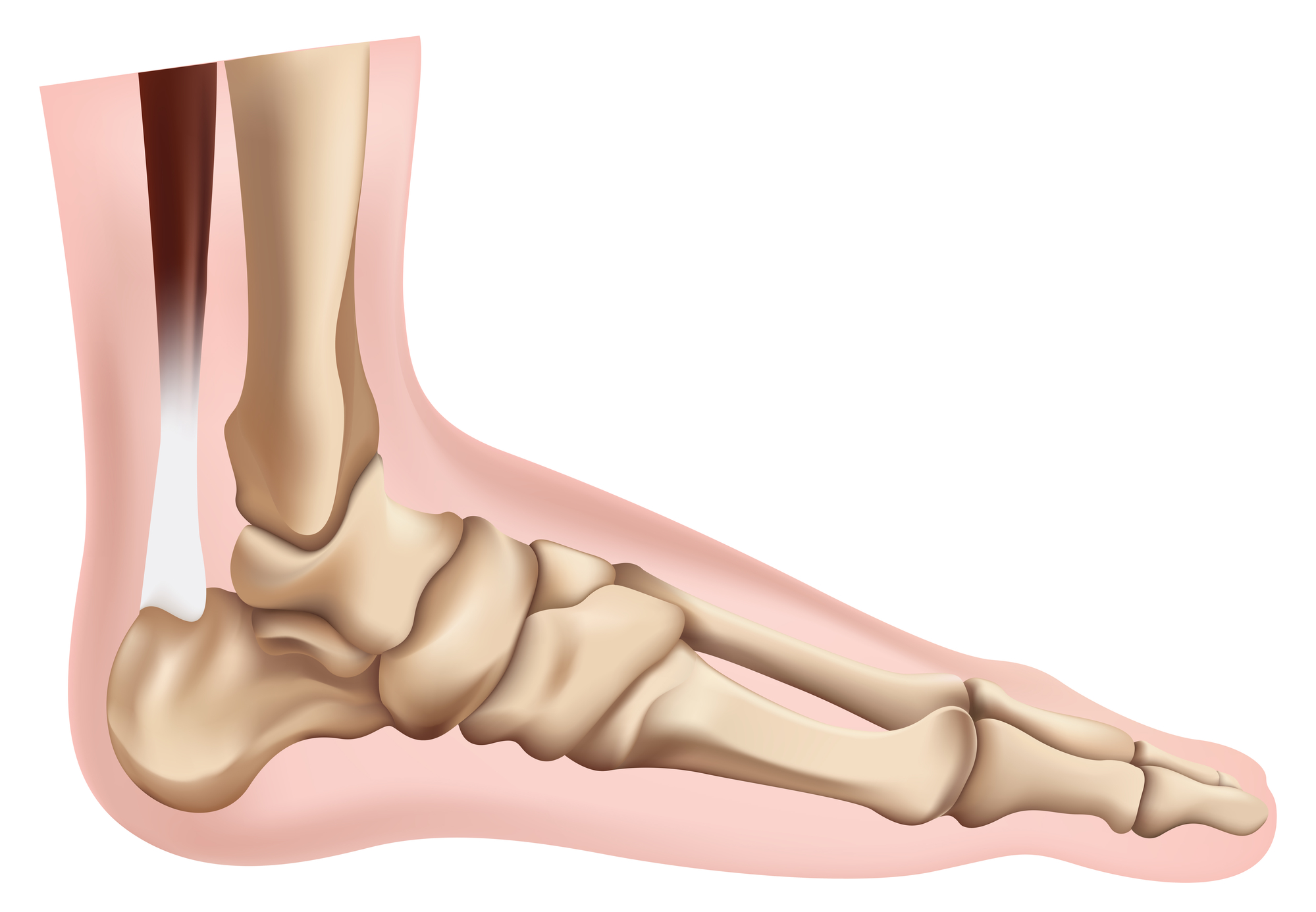Total Ankle Replacement

Arthritis is the inflammation of one or more of your joints and is common in the ankle joint. The major types of arthritis that affect the ankle are osteoarthritis, rheumatoid arthritis, and post-traumatic arthritis. All types can cause pain and stiffness in the ankle joint and make it difficult to walk and participate in activities you enjoy. Three bones make up the ankle joint, primarily enabling up and down movement:
- Tibia (the shin bone)
- Fibula (the thinner bone running next to the shin bone)
- Talus (the foot bone that sits above the heel bone)
The ends of the bones are covered with articular cartilage that allows pain-free motion. Ankle arthritis involves the loss of cartilage in the ankle joint. Over time, bone spurs, pain, and deformity may develop. There is no cure for arthritis, but there are a number of conservative treatments that may help relieve your ankle pain:
- Orthotics
- Bracing
- Physical therapy
- Nonsteroidal anti-inflammatory drugs (NSAIDS)
- Steroid injections
- Activity modification
- Regenerative medicine therapies
If your pain causes disability and is not relieved with nonsurgical treatment, your DOC orthopedic surgeon may recommend surgery. Surgical treatment for ankle arthritis is based on the results of your clinical history, examination, radiographs, type and location of arthritis, and your activity level. Ankle replacement is recommended for guests who suffer with:
- Advanced arthritis of the ankle
- Arthritis that has destroyed the ankle joint surfaces
- Ankle pain that interferes with daily life
During total ankle replacement, arthroplasty, your DOC surgeon removes the damaged cartilage and bone, resurfaces the ends of the tibia and talus, and positions the new metal and plastic implant to replicate the ankle joint and its function. In most cases, total ankle replacement surgery relieves the pain of arthritis and enables you to return to daily activities. Full recovery may take four to nine months, depending on the severity of your condition before surgery and the complexity of your procedure. Your DOC surgeon will recommend DOC physical therapy to help you regain strength in your ankle and restore range of motion.
For more information on the cost of care, click here.




